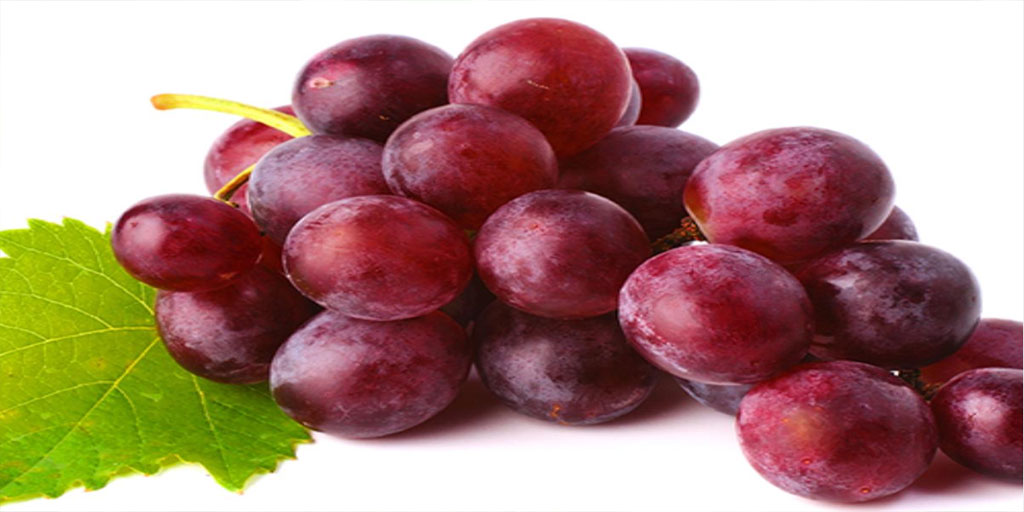



11th July 2020
Grapes nutrition facts
By Nutrition and You
One of the most popular among the regularly featuring table fruits, grapes are widely considered as the "queen of fruits" since earlier times. These tiny berries of the Europe and Mediterranean origin are the storehouse of numerous health-promoting phytonutrients such as polyphenolic antioxidants, vitamins, and minerals. No wonder why so many of us often include them in our diet; be it as a fresh table fruits, dry fruits (raisins), juice, or simply in salads!
Botanically, they are small, round berries growing in clusters on a perennial and deciduous woody vine of the genus, Vitis. Today, they widely cultivated under supervised orchards and vineyards all around the world.
In structure, each grape berry features semi-translucent flesh encased inside a smooth, thin skin. Some varieties contain edible seeds, while others are seedless. The color of the berry is because of the presence of polyphenolic pigments in them. Red or purple berries are rich in anthocyanins while white-green berries compose more of tannins, especially, catechin. Interestingly, these antioxidant compounds concentrated densely in the skin and seeds!
The three most important species of grapes grown around the world are; European (Vitis vinifera), North American (Vitis labrusca, and Vitis rotundifolia), and French hybrids.
- Some of the popular green cultivars are Thompson seedless, sugarone, and calmeria.
- Red varieties include emperor, red globe, cardinal, and flame seedless.
- Concord and zinfandel are some of the flavorful blue-black cultivars.
Commercially, many cultivars of grapes are grown for different purposes either to be eaten as table fruit, fresh or dried (raisin, currant, sultana) or in wine production.
Health benefits of grapes
- Grapes are rich in polyphenolic phytochemical compound resveratrol. Resveratrol is one of the powerful anti-oxidant which has been found to play a protective role against cancers of colon and prostate, coronary heart disease (CHD), degenerative nerve disease, Alzheimer's disease and viral/ fungal infections.
- Resveratrolreduces stroke risk by altering the molecular mechanisms inside the blood vessels. It does so, firstly by reducing the susceptibility of the blood vessel through decreased activity of angiotensin (a systemic hormone causing blood vessel constriction that would otherwise elevate blood pressure) and secondly, through increased production of vasodilator substance, nitric oxide (a beneficial compound that causes relaxation of blood vessels).
- Anthocyanins are another class of polyphenolic antioxidants present abundantly in the red grapes. These phytochemicals have been found to have an anti-allergic, anti-inflammatory, anti-microbial, as well as anti-cancer activity.
- Catechins, a type of flavonoid tannin group of anti-oxidants, discovered in the white/green varieties have also shown to possess these health-protective functions.
- Also, the berries are very low in calories. 100 g fresh grapes just provide 69 calories but zero cholesterol levels.
- Grapes are a rich source of micronutrient minerals like copper, iron, and manganese. Copper and manganese are an essential cofactor of the antioxidant enzyme, superoxide dismutase. Iron is especially concentrated in raisins. Besides, 100 g of fresh grapes contain about 191 mg of health benefiting electrolyte, potassium.
- They are an also good source of vitamin-C, vitamin-A, vitamin-K, carotenes, B-complex vitamins such as pyridoxine, riboflavin, and thiamin.
- [apss_share]



